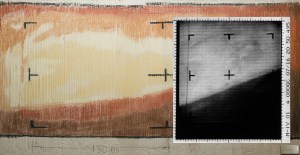Todd J. Barber, Cassini lead propulsion engineer
In a third attempt to solicit other voices and perspectives from the Cassini project, I recently interviewed the Cassini Navigation Deputy Team Chief, Duane Roth, about what he termed the "most challenging period for Orbit Determination since the [Huygens] probe release rev[olution]." Duane spun a wonderful tale of adventure and tribulation for the period essentially covering September of 2007. My interest piqued as he mentioned five different things that conspired against us during this difficult period. First of all, he reminded me that Cassini had just exited solar conjunction, a roughly annual event that leads to "pretty crummy [navigation] data" given the close proximity of the sun to radio signal returned from Saturn to Earth. These data are certainly usable, but they're just noisier than typical, thanks to that pesky intense radio interference from Earth's nearest star. Duane also reminded me that we had two highly anticipated and jam-packed encounters during the first half-revolution of that particular orbit, a frenetic pace even by our cosmically crammed schedule. This bunching of encounters even required us to plan three Orbit Trim Maneuvers (OTMs) within seven days, though fortunately we were able to delete one of these maneuvers.
The second of these two encounters was the highly anticipated flyby of Iapetus, the only close approach of the mission. This intriguing orb, the third-largest satellite of the ringed planet, creeps around Saturn at a mere 0.43 kilometers per second (or 962 mph). Though this seems rather zippy, it's positively leisurely compared to the inner moons of Saturn, and the large size of Iapetus coupled with its low speed made the determination of Cassini's gravity assist at Iapetus more difficult. This was particularly true given our uncertainties of the mass of this black-and-white icy moon as Cassini approached this flyby. As if this weren't vexing enough, the spacecraft entered spacecraft safing mere hours after the successful Iapetus flyby, during the actual downlink. Thankfully, none of the Iapetus close encounter data was lost but we did miss an important navigation downlink pass and thus the Doppler shift from the roughly 22 millimeters per second (0.049 mph) spacecraft speed change caused by safing. Can you imagine being thoroughly and subsequently challenged after missing a change on your car's speedometer of 1/20th of one mph? Such is the life of a deep-space navigator! Even so, I'll remind the reader that Murphy's Law was at least a bit tardy for this encounter--had spacecraft safing occurred before the Iapetus flyby, we wouldn't be enjoying any of the spectacular images we revel over today.
To top off the challenges of this period, the Cassini flight team had to execute not one but two OTMs very soon after Iapetus, the first one actually while in safe mode! Personally, I found this challenging as a propulsion engineer, because the propellant tanks were cold due to shedding of science instrument power during safing. Even though many factors stacked up against us during this trying time, I'm happy to say that we pulled off OTM-128 and OTM-129 very accurately and preserved a wonderful Titan-36 flyby on October 2, 2007. Just as I finally relaxed and prepared for some much-needed October vacations after Titan-36, Duane reminded me that our proposed extended mission (XM), which would commence next summer, will have many similar short transfers and thus will be quite challenging for the entire team. The rest of the Cassini flight team often teases the nav team about their uncanny ability to require propulsive events on top of Earthly holidays, and this year (Halloween, Thanksgiving, and Xmas) is no exception. Fortunately, as I frequently mention, all this work is truly a labor of love for our robotic buddy encircling Saturn nearly a billion miles from home.



































